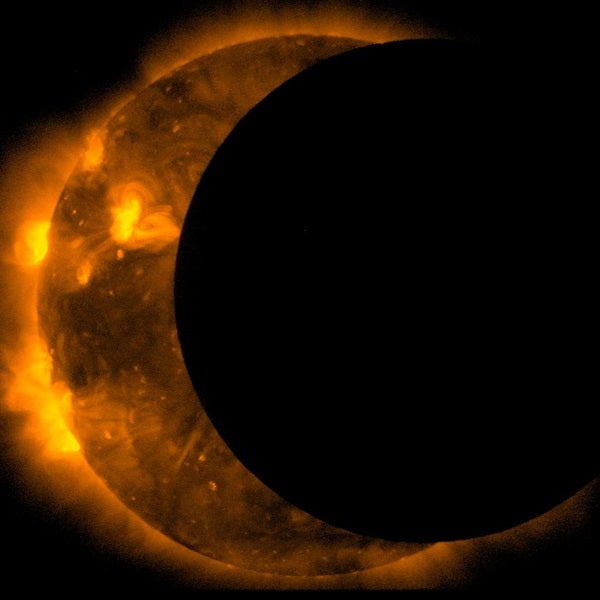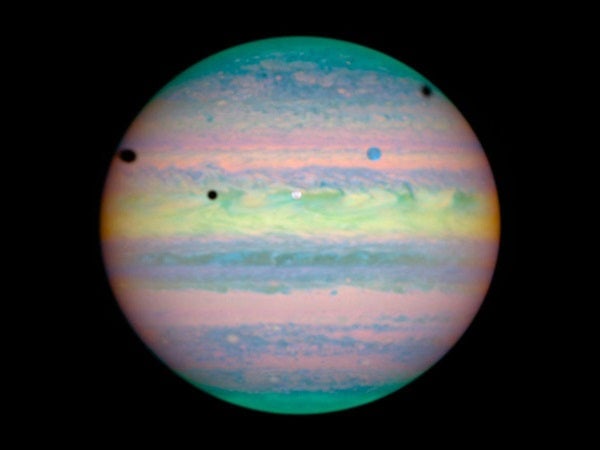Mercury
No. In a total solar eclipse, a moon slides between a planet and its sun, blocking the sun’s light and casting a shadow on the world below. But Mercury doesn’t have a moon, making eclipses there impossible.
Venus
No. Venus doesn’t have a moon either. But that doesn’t mean there aren’t eclipses. Venus has planetary eclipses — or transits — caused by Mercury orbiting between Venus and the Sun. Earth experiences transits, too, every time Mercury or Venus pass between the Sun and Earth. But they’re rare. Mercury and Venus transit Earth 8 years apart, then it takes over a century for the cycle to start over. The next planetary eclipse here on Earth is December 11, 2117.
Mars
No. Mars has two moons, Phobos and Deimos, so solar eclipses are totally possible — they just aren’t total. They’re annular. Just like a total solar eclipse, the moon passes between its planet and the Sun, covering the Sun’s center. But when a moon’s too far from the planet to cover the Sun or — as with Phobos and Deimos — too small, the rest of the Sun sticks out around the sides. See one for yourself in this video Curiosity Rover took on Mars September 13, 2012:
Yes! Jupiter has 69 moons, so you’d think there’d be total solar eclipses aplenty, right? Well, only four are large enough to create totality: Io, Ganymede, Europa, and Callisto. But three can pass between Jupiter and the Sun at the same time. A triple eclipse happens on the gas giant once or twice every 10 years.
Yes! Seven of Saturn’s 62 moons are big enough to create a total solar eclipse. A larger number of big moons doesn’t mean more eclipses, though. Because of the tilt of Saturn’s orbital plane, a solar eclipse only occurs once every 15 years. The rings make up for it, though. That’s right: Saturn’s rings move between the planet’s surface and the Sun, casting their own shadow on the planet.
Uranus
Yes! Twenty-seven moons circle Uranus, but more than half of them are too small or too far away to completely cover the Sun. Uranus is also tilted sideways, and all its moons orbit above the planet’s equator. What this means is that solar eclipses on Uranus are rare: They only occur once every 42 years.
Neptune
Yes! Neptune’s six inner moons and Triton can create a total solar eclipse. But keep in mind it’s pretty dark on Neptune already. Because of the planet’s distance from the Sun, Neptune only receives 1/900th of the light Earth does. At 0.018 degrees in apparent diameter, the Sun looks like any other star out there. That’s why Neptune’s solar eclipses start and end in a matter of seconds.
Pluto
Yes! The dwarf planet might not get much love lately, but it does get total solar eclipses. Every 120 years, Pluto and its largest moon, Charon, take turns eclipsing each other once a plutonian day: that’s approximately 6.4 Earth days. But because Pluto only shows one side of its face to Charon, solar eclipses only happen on that half of the planet.











